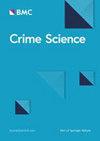Modeling behavioral patterns of family violence aggressors
IF 3.1
Q1 CRIMINOLOGY & PENOLOGY
引用次数: 0
Abstract
The presumption that family violence will repeat and escalate is embedded in practices including risk assessment and case management. However, there is limited evidence that further episodes are inevitable, or that subsequent episodes will increase in severity. Therefore, we need to better understand temporal patterns in aggressor behavior to inform how risk is conceptualized in practice. For a sample of 2115 family violence aggressors who came to police attention in Integrated Safety Response catchment areas in Aotearoa New Zealand, we collected information New Zealand Police routinely recorded about reported harm between 2018 and 2020. We used a hidden Markov model to estimate the latent (i.e., unmeasurable) states behind the information reported to police, and modeled aggressors’ movement between those states over time. We identified three latent states. The first contained low or no reported harm, the second contained low probabilities of reported harm, and the third involved a high probability of reported verbal abuse and a moderate probability of reported physical violence. We identified four pathways through the latent states over the two-year follow-up period, which we called No reported harm, High reported harm, Low reported harm, and De-escalation. The findings add to the body of research indicating that family violence aggressors do not inevitably repeat or escalate their harmful behavior, and that a small subset of cases account for a large proportion of reported harm. This study demonstrates how information that police routinely collect can be used to estimate aggressors’ latent behavioral states and model pathways communicating the probability that they will continue to come to police attention for family violence, contributing to improved risk assessment and practice.模拟家庭暴力施暴者的行为模式
包括风险评估和案件管理在内的各种做法中都有家庭暴力会重复发生和升级的假设。然而,只有有限的证据表明,进一步的暴力事件是不可避免的,或者随后的暴力事件会更加严重。因此,我们需要更好地了解施暴者行为的时间模式,从而为在实践中如何将风险概念化提供依据。针对新西兰奥特亚罗瓦综合安全响应集水区警方关注的 2115 名家庭暴力施暴者样本,我们收集了新西兰警方例行记录的 2018 年至 2020 年期间报告的伤害信息。我们使用隐马尔可夫模型来估计向警方报告的信息背后的潜在(即不可测量的)状态,并模拟了侵害者随时间在这些状态之间的移动。我们确定了三种潜在状态。第一种是低伤害或无伤害报告,第二种是低伤害报告概率,第三种是高辱骂报告概率和中等身体暴力报告概率。在为期两年的跟踪调查中,我们发现了通过潜伏状态的四种途径,我们称之为无伤害报告、高伤害报告、低伤害报告和降级。研究结果进一步表明,家庭暴力施暴者并不会不可避免地重复或升级他们的伤害行为,一小部分案件占报告伤害案件的很大比例。这项研究展示了如何利用警方日常收集的信息来估算施暴者的潜在行为状态,并建立模型来说明他们因家庭暴力而继续受到警方关注的可能性,从而有助于改进风险评估和实践。
本文章由计算机程序翻译,如有差异,请以英文原文为准。
求助全文
约1分钟内获得全文
求助全文
来源期刊

Crime Science
Social Sciences-Cultural Studies
CiteScore
11.90
自引率
8.20%
发文量
12
审稿时长
13 weeks
期刊介绍:
Crime Science is an international, interdisciplinary, peer-reviewed journal with an applied focus. The journal''s main focus is on research articles and systematic reviews that reflect the growing cooperation among a variety of fields, including environmental criminology, economics, engineering, geography, public health, psychology, statistics and urban planning, on improving the detection, prevention and understanding of crime and disorder. Crime Science will publish theoretical articles that are relevant to the field, for example, approaches that integrate theories from different disciplines. The goal of the journal is to broaden the scientific base for the understanding, analysis and control of crime and disorder. It is aimed at researchers, practitioners and policy-makers with an interest in crime reduction. It will also publish short contributions on timely topics including crime patterns, technological advances for detection and prevention, and analytical techniques, and on the crime reduction applications of research from a wide range of fields. Crime Science publishes research articles, systematic reviews, short contributions and theoretical articles. While Crime Science uses the APA reference style, the journal welcomes submissions using alternative reference styles on a case-by-case basis.
 求助内容:
求助内容: 应助结果提醒方式:
应助结果提醒方式:


